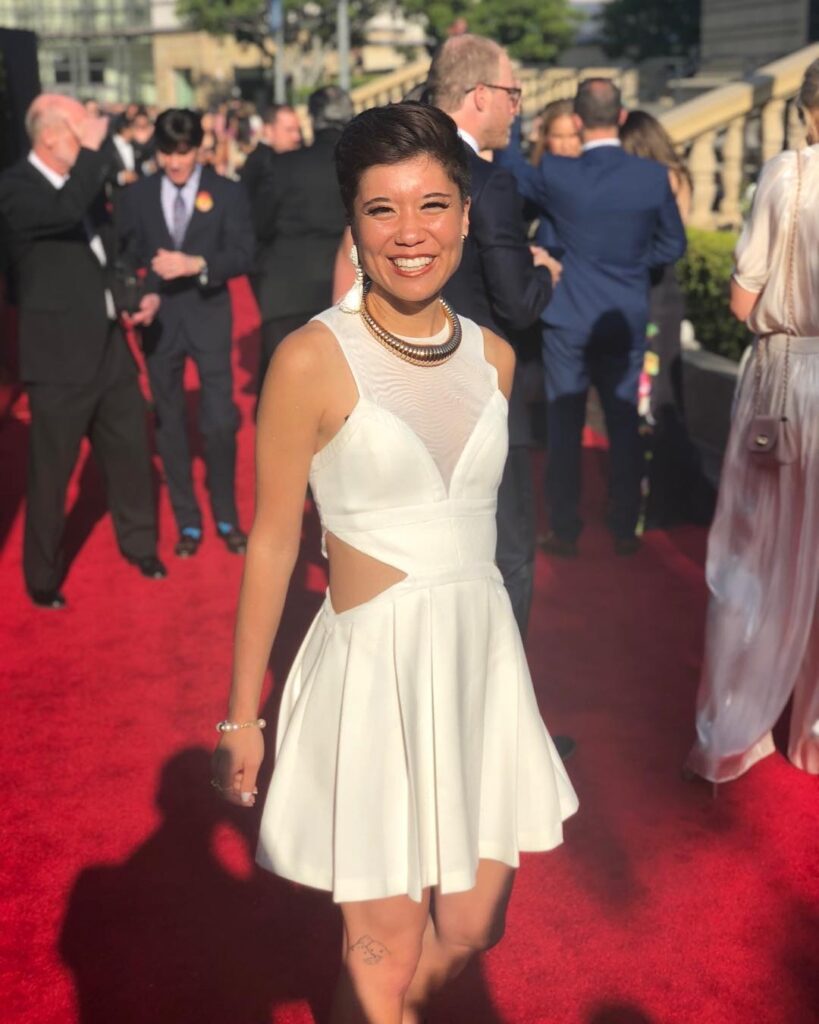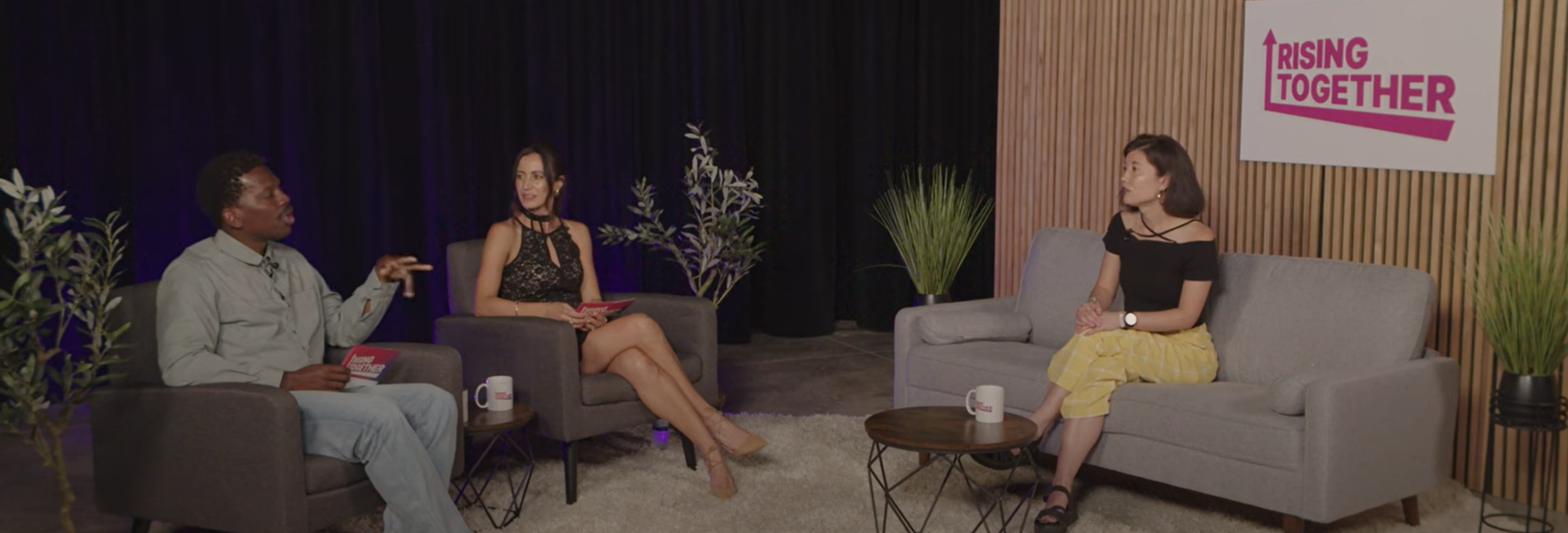As part of a series where we invite arts professionals to share their tips on putting together a great portfolio, we’re featuring Emmy award-winning film producer Sarah Kambara ’14, Business of Art and Design. Following stints at Walt Disney Animation Studios and Pixar, Kambara now serves as a producer at Chromosphere. In March 2024, she was also a featured guest on the Rising Together Podcast, a Ringling College program about how creative expression can foster inclusion.

While Kambara is quick to say that she’s not an artist herself, she has built a career around facilitating creative people. “I always wanted to support artists,” she said on Rising Together. “I just needed to be around creativity all the time.”
And for her job, “Creativity ends up being how you manage projects and how you manage others and how you’re able to support a team to take care of the vision.” That type of organizational thinking is exactly what’s needed when assembling a portfolio.
For prospective students, portfolios are a way to clearly demonstrate artistic capabilities like perspective, depth, dimension, and even color theory. The work itself should get all the focus, argued Kambara. Any unnecessary explanations or muddled captions will detract from your perceived skill level.

That’s why the veteran producer and production coordinator recommends that students start early, building their portfolio a little at a time so that the end result is clear and organized rather than rushed and jumbled.
“A nice thing about working on it over time is you can step back and see what you may want to edit before you submit it,” said Kambara. “If you procrastinate, it gives less opportunity for editing and getting feedback from others.”
That being said, you’re not trying to turn the portfolio into a work of art in and of itself. The point of the portfolio is to let your actual artwork speak for itself, and the best way to do that is to put it out there and then get out of the way. The presentation shouldn’t overshadow the artwork by being overly showy or complex.
“Your portfolio work will speak for your style and voice—let your work shine and show who you are,” said Kambara. “Lay out an organized presentation of your work and use a uniform font for the text.”
“A non-cohesive presentation is a common mistake,” she added. “When portfolios are not presented in a cohesive way, it can distract the reviewer from intently looking at your work.”
Sign up for our newsletter to get the latest Ringling College news in your inbox.
Contact:
Office of Marketing and Communications
communications@ringling.edu
941-309-4008



